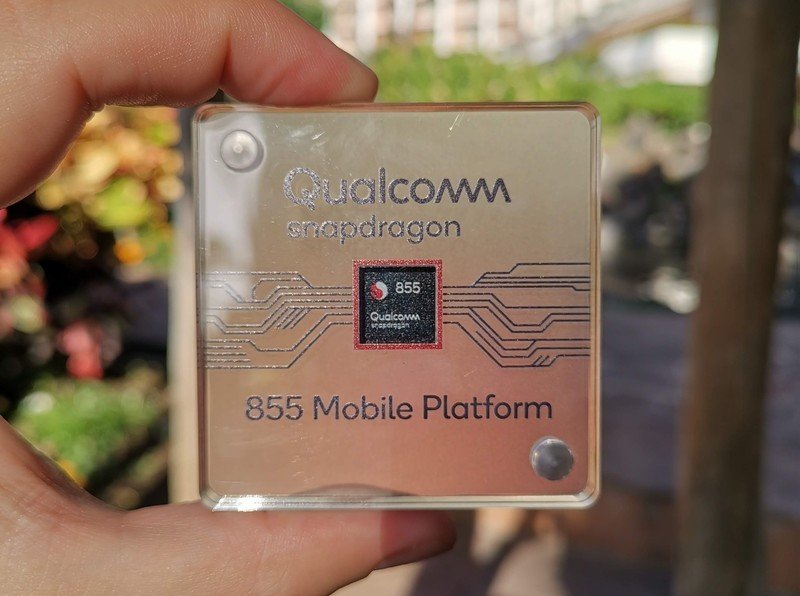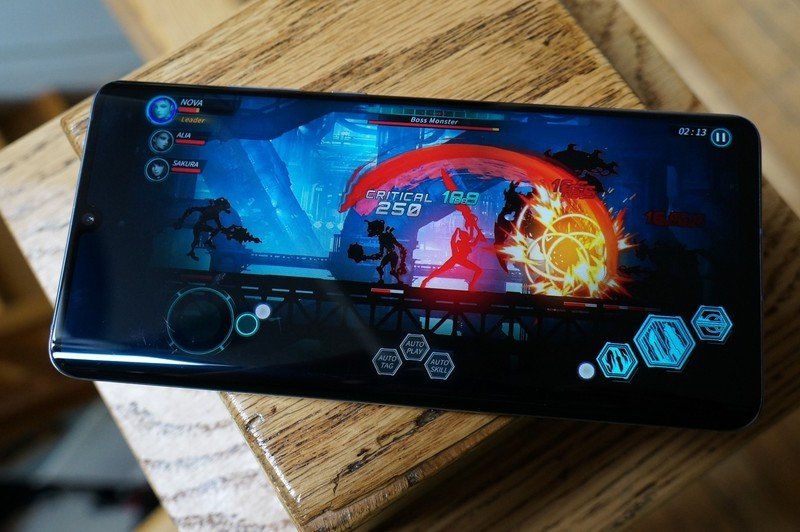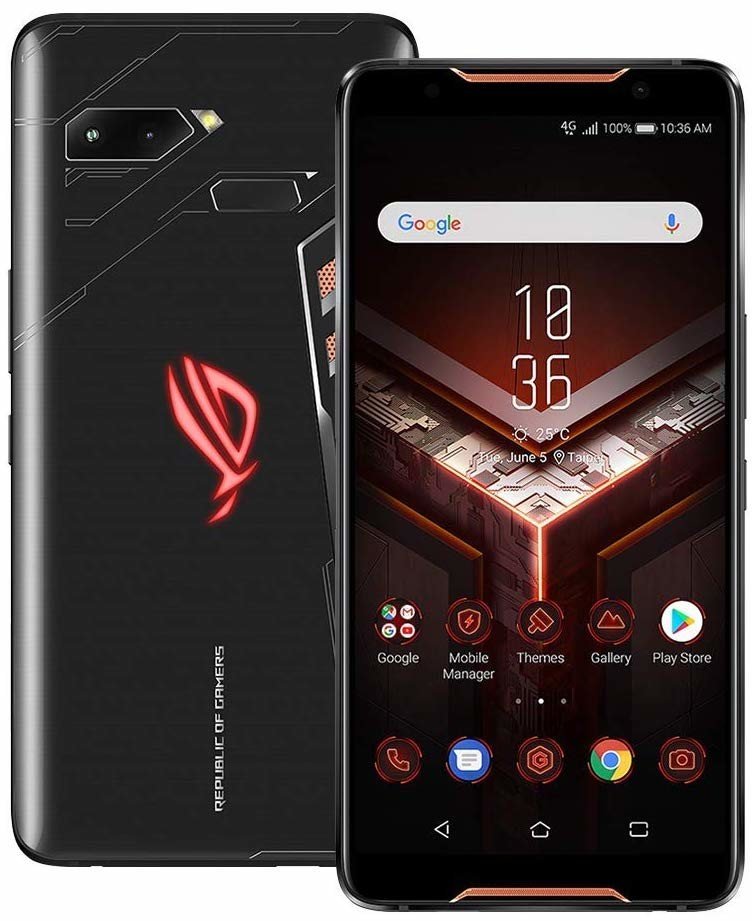What you need to know about the Qualcomm Snapdragon 855+

Qualcomm has announced the Snapdragon 855+, calling it a "new force to be reckoned with, unlocking maximum power and performance for mobile gaming." Those are some awesome buzzwords designed to get people curious about or in the market for "a force to be reckoned with" very interested and it works. I'm interested, and I'm sure I'm not alone. But outside of the announcement and a few bits of info, we're left on our own to discover why the Plus makes it better.
We'll know for sure soon enough as the ASOS ROG Phone 2 is sporting the new chip, as are some other lesser-known names like the Xiaomi Black Shark 2 Pro and the benchmarks are demonstrating that not only is it the fastest chip in any Android phone, but it is by a sizable amount.
But the whys and the hows are still there to be answered, and even though Qualcomm isn't giving a lot of the details, a bit of internet and a dash of speculation can fill in the gaps. Let's do this.
What is an SoC?

In case you're not up on all the hardware lingo for small single-board computing, we'll start with the basics here. The SoC is the brains of any small portable device and it determines the capabilities because of the hardware it holds.
SoC stands for System on Chip and holds all the brains that make your phone work.
It's easy to call an SoC "the chip" and I do it myself, but that's not quite an apples to apples comparison. On a traditional PC board, the chip refers to the chipset used to control the communication between the CPU, RAM, storage, and peripherals. It determines what type of CPU can be used, what types of PC card slots are available (and how many) and what the memory speed is. It also decides the number of USB ports and whether the motherboard supports a PS2 mouse and keyboard, for example.
On a phone, the SoC is comprised of controller chips and a CPU, GPU and possibly a modem or other goodies like AI coprocessors and camera signal processors. When we talk about a Qualcomm Snapdragon "chip" what we're really talking about is a Qualcomm Mobile Platform SoC. Saying chip is just so much easier.
What makes the 855+ better?
Qualcomm lists three things that the 855+ has or does differently than the regular 855: improved graphics, an uplift in CPU performance, and robust 4G and 5G connectivity. The company is happy to tell us what these changes offer and how better they are, but there is still a bit of speculation in order to figure out how we're going to see them.
Be an expert in 5 minutes
Get the latest news from Android Central, your trusted companion in the world of Android
It's likely that Qualcomm is "binning" the CPU for the 855+ from parts built for and used in the standard 855. The Prime core clock sees a speed boost from 2.84GHz to 2.96GHz in the Plus version but outside of that, the basic CPU layout is unchanged and the 855+ is still an eight-core CPU built at 7nm. What binning means is that the CPUs are chosen based on their ability to be stable at the higher clock speed, and that could be from tiny differences in the manufacturing process from run to run.
There's also a chance that these are the standard 855 CPU and Qualcomm is helping companies that build phones make changes to provide better thermal performance so the chips can run faster without getting hotter any quicker. This may explain the whole gaming aspect — phones the ASUS' Republic of Gamers models are thick, use better heatsinks and even have some heat pipe tech because they are designed to run at full speed for long periods.
It appears that the 855+ is the regular 855 overclocked where it matters.
In either case, the CPU inside the 855+ SoC is the same CPU that's found in the standard 855 with a higher clock on one core. And the GPU looks like more of the same.
Qualcomm says the GPU on the 855+ will deliver "15 percent faster graphics rendering" without giving any technical details about how it's going to accomplish it. The collective internet mind says that the Adreno 640 GPU has a speed boost, raising its core clock rate from 585Mhz seen in the standard 855 to 672Mhz or 675MHz in the 855+, which would give an increase of 15%. While I agree and think this will be the case, that doesn't necessarily mean 15% faster graphics performance. Marketing speak often doesn't match actual performance.
Qualcomm also points out an improved AI engine and "multi-gigabit 4G connectivity while unleashing cutting-edge 5G experiences" but doesn't claim that a new AI core is present or that the SoC will house the new X50 modem, and nobody thinks either will happen. The X24 modem is listed, which is the same hardware used in the standard Snapdragon 855 and delivers great LTE performance with 3x20 MHz carrier aggregation and up to 2x 106Mbps LTE streams (it's strong and fast). When paired with the X50 modem, we would see the mmWave and sub-6 5G NR tech advertised. it's almost certain that the X24 modem is on-die in the SoC and the X50 modem will be external.
Basically, the 855+ is an overclocked 855. It will deliver on the promises of better performance, but will those gains be enough to notice?
Is it really better?

Yes. At least on paper. 15% gains are 15% better no matter how you slice it, and a faster Prime CPU core means faster calculations. This translates into better performance, but that doesn't mean it will be enough to notice.
Faster isn't the only metric which we can measure "better" with though. The 855+ will offer increased single-thread performance because of a faster Prime core clock speed and the higher performance-per-watt will allow computationally intensive tasks to take less time. This is known as the race-to-sleep or race-to-dark technique where a chip enters its highest operating frequency so the work can be done as fast as possible. Once completed, the chip — in this case, the Prime CPU core — can go back to idle or sleep.
"Faster" is not the only way to measure "better".
This does save battery, though it feels like it should be counter-productive. Electronics are often that way, even to the folks who designed them. In any case, this would help save battery life provided the proper cooling was available, and with "gaming" phones, it will be.
What you probably won't see are 15% gains over the standard 855 for the apps you use every day, even if they are games. There are places where we could see a substantial improvement, though: emulation and "desktop" modes.
Emulation is hard on a CPU. You have to run the emulation software and provide enough bandwidth for the emulated CPU to perform without negatively affecting the user experience. While this applies for things like NES or PlayStation emulators, it would also apply to any sort of virtual machine. And since the Android Runtime (and Dalvik before it) are essentially virtual machines, there could be a dramatic across-the-board improvement. Notice I say could and not that this is something we should count on seeing.
The same goes for Android's Desktop mode emulation. Not only are you translating an application's bytecode into a set of native instructions (emulation in a sense) but you're also sending out more pixels and a larger frame-buffer in many cases. A better CPU and GPU would be welcome here.
All questions answered soon
ASUS has confirmed that the upcoming ROG Phone 2 will include the Snapdragon 855+ and we expect to see it officially announced very soon. Once it filters its way into the hands of people who love to tinker around, we'll have all the answers about how the gains in speed are achieved and if it's actually any better at being a phone and gaming machine.
While we could be surprised when the 855+ finally arrives, I don't think we will be.
But for now, I'm pretty confident that the internet has this one all figured out and what we're going to see is a basically an overclocked 855, and that's a good thing. More is always good when it comes to phone hardware for a lot of folks, and what's bleeding edge today becomes affordable and commonplace tomorrow.
If you just can't wait to get your hands on a "proper" gaming phone, there's always the current ROG Phone.

Gaming overload
The ASUS ROG Phone is a gaming phone through and through. It comes with a Snapdragon 845, 8GB of RAM, a 90Hz AMOLED display, and a 4000mAh battery. It also has plenty of features just for gamers, such as an add-on fan, customizable air triggers, two USB-C ports, and accessories to take your mobile gaming to the next level.

Jerry is an amateur woodworker and struggling shade tree mechanic. There's nothing he can't take apart, but many things he can't reassemble. You'll find him writing and speaking his loud opinion on Android Central and occasionally on Threads.
